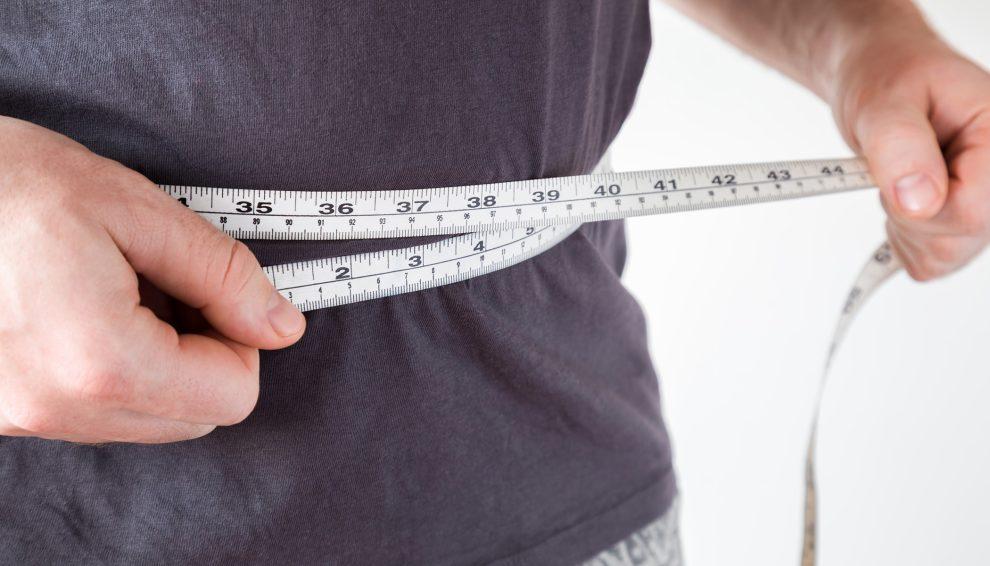Being overweight poses a health risk. Being overweight can increase your chances of diabetes, cardiovascular disease, and many other serious health problems. It also makes you more vulnerable to Covid-19.
This is especially true of visceral fat, which can increase the risk of type 2 diabetes and heart disease, more than fat stored elsewhere. But why is it so dangerous?
What is visceral fat?
All body fat is not the same. Visceral fat is the part of the adipose tissue found in the abdomen, under the muscles of the abdominal wall: it differs from subcutaneous fat, stored under the epidermis, and intramuscular fat, which is distributed between muscle fibers. visceral adiposity surrounds internal organs (liver, stomach and intestines): its particular location makes this type of fat potentially more dangerous than others.
Why is visceral fat dangerous?
In 2019, the International Society of Atherosclerosis and the International Chair of Cardiometabolic Risk presented the results of their research on visceral fat: this is the form of adiposity most related to chronic diseases, regardless of body weight. In addition, the researchers wanted to alert the scientific community: this type of “invisible” fat is difficult to diagnose and treat, so it is important to make the population aware of this issue.
Fat produces chemicals that can be healthy or unhealthy for the body. This cocktail of bodily chemicals varies depending on where body fat is stored. Visceral fat, in particular, produces pro-inflammatory chemicals called cytokines. These are associated with serious illnesses like Covid-19, as well as increased blood pressure, bad cholesterol levels, which can contribute to the risk of heart disease and type 2 diabetes.
It is therefore more dangerous to have an “apple” physique that is, having excess fat around the belly, what “pear” and having excess fat in the buttocks and thighs.
How to know if you have visceral fat?
As mentioned above, the most obvious clue to excess visceral fat is an “apple” shape, in which the waist appears larger than the thighs. That’s why measuring your waist-hip ratio (WHR) can be a useful tool for assessing weight-related health risks.
This measurement is often done in addition to the body mass index (BMI) calculation, which does not take into account the distribution of excess weight on the body.= To calculate your RTH, divide your waist measurement by your hip measurement. If your waist is 80 cm and your hips are 90 cm, your ratio is 0.89. According to the World Health Organization (WHO), women should have a WHR of 0.85 or less and men 0.9 or less.
How do you know if your actions put you at risk?
While calculating WHR can seem confusing, know that you can simply measure your waist circumference (around your belly button). It is advisable lose weight if your waist circumference is more than 94 cm for men or 80 cm for women. Men with a waist circumference of more than 102 cm and women with a waist circumference of more than 88 cm are at high risk of health problems and should see a doctor. If you have difficulty losing weight, you should know that a specialized doctor or a dietitian can accompany you.
What causes visceral fat?
Visceral adiposity is usually caused by bad eating habits and for him sedentary lifestyle. However, there are many factors outside of your control that can favor the appearance of visceral fat. These include your genes, aging, and hormones. Visceral fat, for example, can increase after menopause. Stress also plays a key role. Studies have shown that stress can increase the chances of becoming obese due to cortisol, a hormone released in response to periods of chronic stress. Cortisol leads to increased visceral fat deposition and has been shown to increase appetite and preference for energy-dense foods.
How to get rid of visceral fat? eat a balanced diet
As you know, industrially processed foods are very high in calories compared to other types of preparations. Therefore, it is essential to reduce its consumption and favor “homemade” cooking and a balanced diet, which consists in particular of:
- Fruits and vegetables : provide the necessary nutrients, vitamins and minerals and promote good intestinal transit;
- fibers : that speed up digestion and facilitate transit;
- good fats: such as those contained in oily fish (tuna, salmon, sardines) and vegetable oils (nut oil, olive oil, soybean oil). These types of fats are rich in Omega-3, Omega-6, and Omega-9, which help the body protect cardiovascular function, balance blood lipids, and regulate blood sugar, respectively.
Practice a regular sports activity
Exercises like sit-ups tighten your abdominal muscles, but don’t target visceral fat. The best way to remove it isassociate a healthy diet with increased physical activity build muscle mass at the expense of fat mass. Exercising on an empty stomach helps shed fat more quickly, but it has been shown that 80 minutes a week of aerobic (cardio, HIIT) and resistance exercises can also significantly reduce visceral adiposity.
Improve your lifestyle
Tobacco, alcohol, and certain medications can promote obesity.
Smoking, and more specifically nicotine, in addition to being one of the possible causes of diabetes, also influences hormonal balance: hormones are responsible, among other things, for the distribution of fat in the body. Thus, tobacco consumption would lead to weight gain in the abdominal area.
Reducing alcohol consumption can be a good way to reduce waist circumference. Alcoholic beverages contain a large amount of sugars. Consumed on a regular basis, they can cause a rise in blood sugar and therefore the formation of additional fat around the belly.
Getting enough sleep and reducing stress levels can also help you lose weight. As mentioned above, cortisol, the hormone our bodies produce during times of stress, promotes weight gain. Therefore, it is essential to get enough sleep, because the reduction in sleep hours disrupts the hormonal system.
Ask a specialist for help
If all the solutions listed above really help fight weight gain, you should also keep in mind that losing weight is not as simple as miracle weight loss cures make it seem. It is not enough to follow a draconian diet to lose a few kilos. This is a true work on yourself that will test your willpower, which implies questioning yourself and changing your lifestyle. This is a long-term job that can sometimes take time before showing a convincing result.
It is also possible that you find yourself in a situation where, being aware of the need to lose weight due to the risks it poses to your health, it is simply difficult for you to take the step and get going. Know that many of you are in this situation, that there are many methods to achieve your ideal weight and that among these methods, one of them suits you better. If you don’t know where to start, or if traditional diets don’t seem to work, it may be best to take a professional with you. specialist who will be able to advise you and guide you towards the care corresponding to your nature.
Seek medical attention
Have you adopted a healthy diet and started a new sports activity, but the results are not there? Know that your health status may require specialized care and appropriate treatment.
This treatment can be medicated either surgical such as bariatric surgery. For example, if visceral fat is caused by menopause, a Swiss study shows that a hormone treatment can also be considered. To find out more about all the existing treatments, seek advice from a specialist who can guide you and present you with the different options available to you depending on your state of health.




